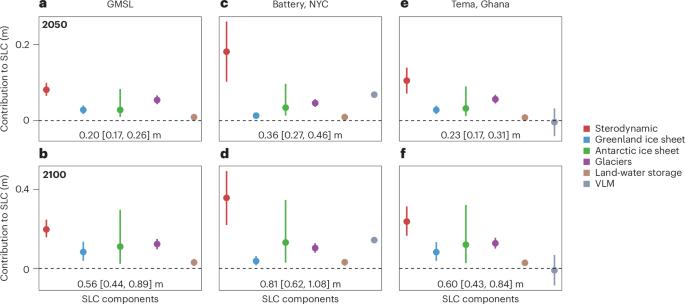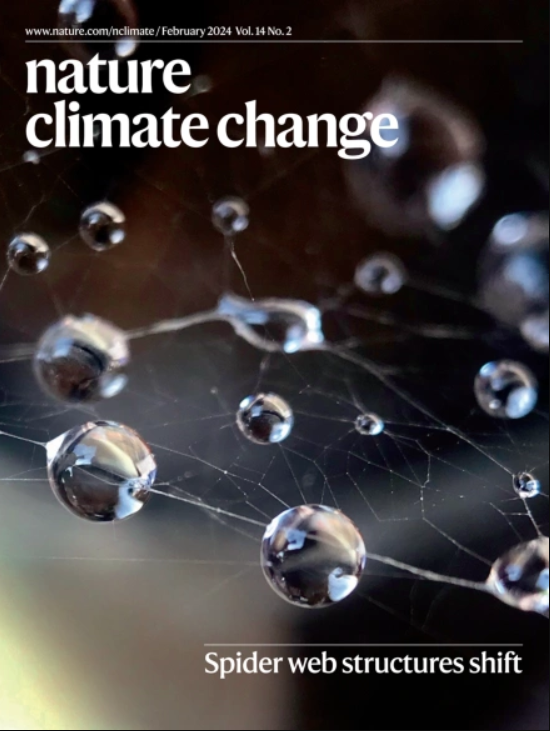Progress and future directions in constraining uncertainties in sea-level projections using observations
IF 27.1
1区 地球科学
Q1 ENVIRONMENTAL SCIENCES
引用次数: 0
Abstract
Coastal planning, mitigation and adaptation efforts rely on credible sea-level projections generated by physical models. However, the large uncertainties in these projections pose a challenge for policymakers. Here we provide an overview of the main sources of uncertainty in model projections of sea-level change on multi-decadal to centennial timescales and we offer perspectives on the use of observations to narrow uncertainties. We propose several directions for future research, including improvements in emerging emulation techniques, more systematic quantification of uncertainty structure within both observations and models, lengthening observational records of processes, and expanding collaborations across physical and social sciences. Advancements in these areas are urgently needed, as the next phase of the Intergovernmental Panel on Climate Change assessment cycle gets underway. Sea-level rise poses a substantial risk to coastal communities and economies, thus accurate predictions are needed to enable planning and adaptation. This Perspective provides an overview of uncertainties in model projections of sea-level rise, and how observations can be used to reduce these.

利用观测限制海平面预估不确定性的进展和未来方向
沿海规划、缓解和适应工作依赖于物理模型产生的可靠的海平面预测。然而,这些预测的巨大不确定性给政策制定者带来了挑战。在这里,我们概述了在几十年至百年时间尺度上海平面变化模式预估的主要不确定性来源,并提供了利用观测来缩小不确定性的观点。我们提出了未来研究的几个方向,包括改进新兴的仿真技术,更系统地量化观测和模型中的不确定性结构,延长过程的观测记录,以及扩大物理和社会科学之间的合作。随着政府间气候变化专门委员会评估周期的下一阶段开始,迫切需要在这些领域取得进展。海平面上升给沿海社区和经济带来了巨大的风险,因此需要准确的预测来进行规划和适应。本展望概述了海平面上升模式预估中的不确定性,以及如何利用观测来减少这些不确定性。
本文章由计算机程序翻译,如有差异,请以英文原文为准。
求助全文
约1分钟内获得全文
求助全文
来源期刊

Nature Climate Change
ENVIRONMENTAL SCIENCES-METEOROLOGY & ATMOSPHERIC SCIENCES
CiteScore
40.30
自引率
1.60%
发文量
267
审稿时长
4-8 weeks
期刊介绍:
Nature Climate Change is dedicated to addressing the scientific challenge of understanding Earth's changing climate and its societal implications. As a monthly journal, it publishes significant and cutting-edge research on the nature, causes, and impacts of global climate change, as well as its implications for the economy, policy, and the world at large.
The journal publishes original research spanning the natural and social sciences, synthesizing interdisciplinary research to provide a comprehensive understanding of climate change. It upholds the high standards set by all Nature-branded journals, ensuring top-tier original research through a fair and rigorous review process, broad readership access, high standards of copy editing and production, rapid publication, and independence from academic societies and other vested interests.
Nature Climate Change serves as a platform for discussion among experts, publishing opinion, analysis, and review articles. It also features Research Highlights to highlight important developments in the field and original reporting from renowned science journalists in the form of feature articles.
Topics covered in the journal include adaptation, atmospheric science, ecology, economics, energy, impacts and vulnerability, mitigation, oceanography, policy, sociology, and sustainability, among others.
 求助内容:
求助内容: 应助结果提醒方式:
应助结果提醒方式:


